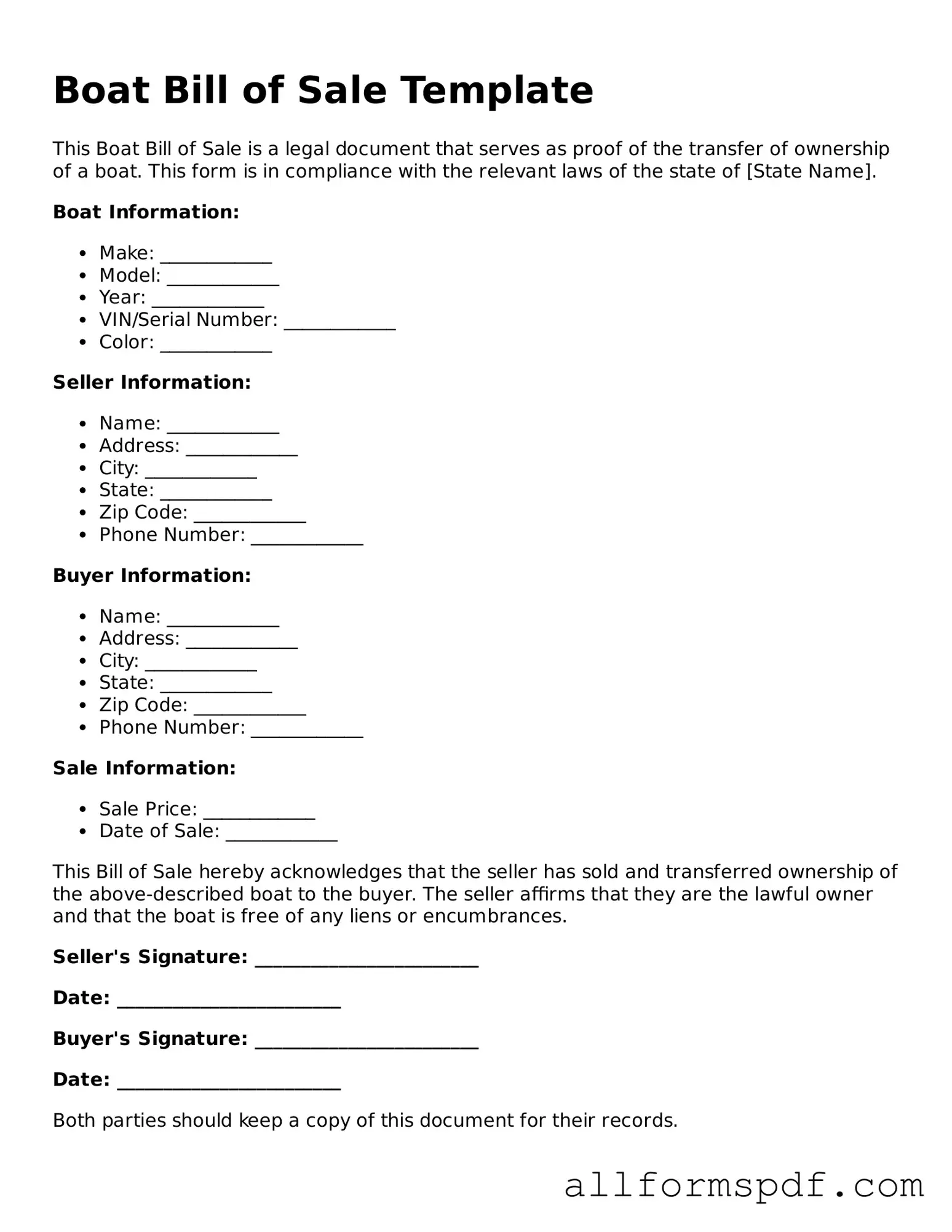Filling out a Boat Bill of Sale form can seem straightforward, but many people make common mistakes that can lead to complications later on. One of the most frequent errors is failing to include all required information. Buyers and sellers must provide essential details such as the boat's make, model, year, and hull identification number. Omitting any of this information can create confusion and may even render the sale invalid.
Another common mistake is not accurately documenting the sale price. The sale price is crucial for both parties, as it can affect taxes and registration. If the price is left blank or inaccurately stated, it could lead to disputes down the line. It’s essential to be clear and precise about the amount to avoid any misunderstandings.
People also often neglect to sign the document. Both the buyer and seller must sign the Boat Bill of Sale for it to be legally binding. Without signatures, the form lacks authenticity and may not hold up in legal situations. Always double-check that both parties have signed before finalizing the sale.
Additionally, many individuals forget to include the date of the transaction. This might seem minor, but the date is important for record-keeping and legal purposes. It helps establish when the ownership of the boat changed hands and can be crucial if any disputes arise regarding the sale.
Lastly, not keeping a copy of the completed form can lead to issues later on. After filling out the Boat Bill of Sale, both parties should retain a copy for their records. This documentation serves as proof of the transaction and can be invaluable if questions or disputes come up in the future. Always ensure that both parties have their own copies to avoid any potential problems.
